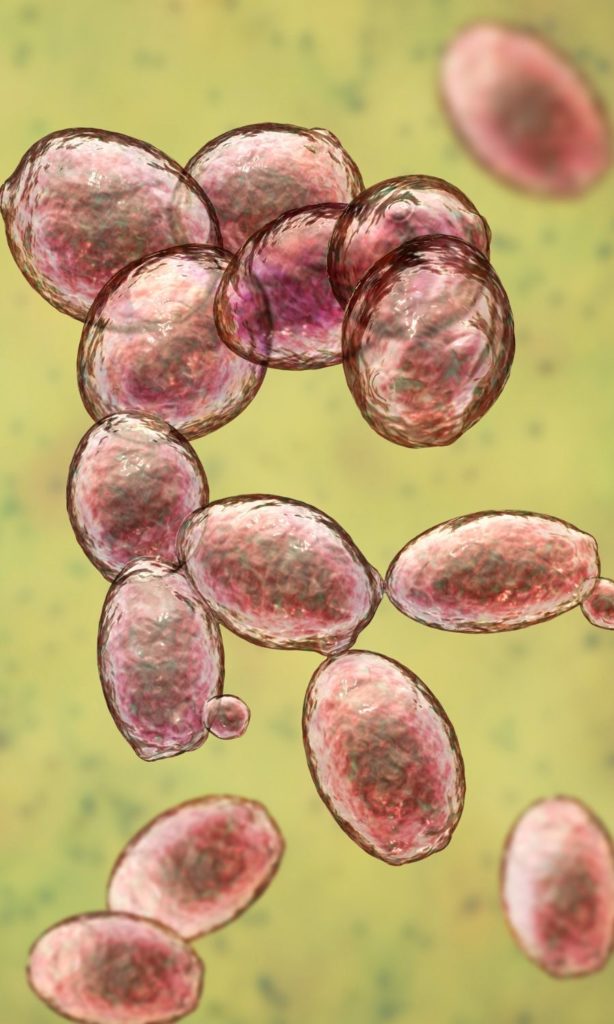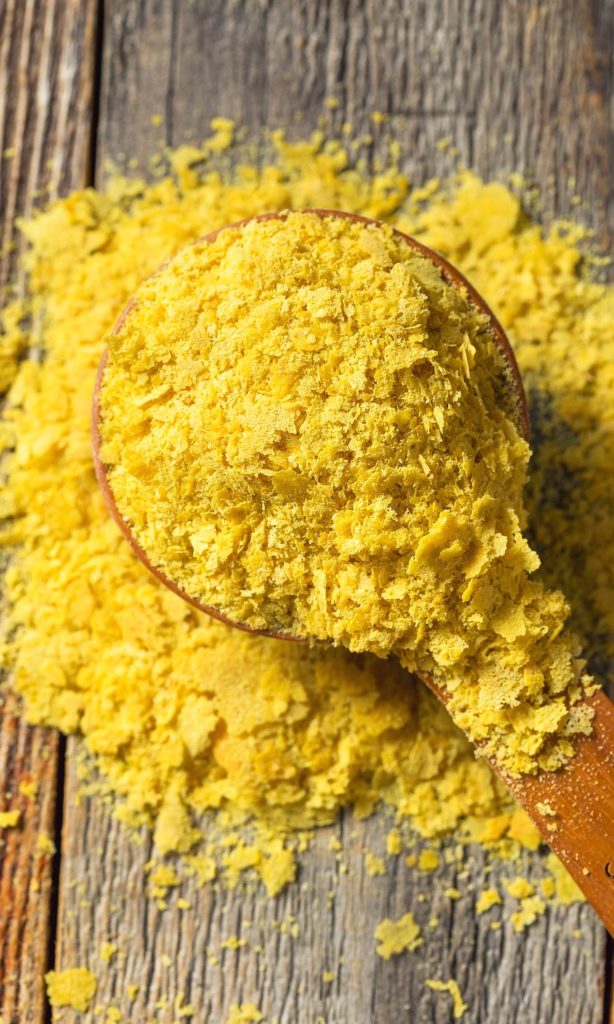Yeast in dog food is mainly added as a flavor enhancer. Yeast products can also provide protein and vitamins as well as some functional ingredients like beta-glucans and oligosaccharides.
Contents
Purpose of Yeast in Dog Food
Yeast is a common ingredient in dog foods. Many products contain at least one form of yeast ingredient.
The most common type of yeast used in dog foods is simply dried yeast or brewer’s yeast. Other yeast ingredients include nutritional yeast, yeast extract, or selenized yeast.
Yeast is a single-celled microorganism classified as a fungus.

Yeasts can ferment carbohydrates into carbon dioxide and alcohol. Since ancient times they aid in brewing, baking, and winemaking.
They include a variety of different species that are classified as yeasts based on their biological properties.
Yeast or yeast-like organisms used in dog food formulas are usually Saccharomyces species like Saccharomyces cerevisiae (baker’s yeast). But some products may include Kluyveromyces marxianus (dairy yeast), or Candida utilis (torula yeast)[6].
Viable yeast supplements like active dry yeast or yeast culture can act as a probiotic with potential beneficial effects on the gastrointestinal functionality of dogs[13].
But most yeast ingredients consist of non-viable deactivated yeast.
Yeasts are also used as a nutritional supplement. They provide protein, sugars, vitamins, minerals, and other micronutrients.
Dog foods can include active dry yeast or yeast culture. But most often they use non-viable ingredients like brewer’s dried yeast, hydrolyzed yeast, or yeast extracts.
Some manufacturers explore yeasts as a sustainable novel source of protein. Their protein content also makes them an interesting alternative protein for plant-based recipes[9].
Yeast cell walls also contain some prebiotics like beta-glucans or mannan-oligosaccharides.
Some people believe in yeast as a functional food. Yeast supplements promise to keep fleas away and improve skin, immune, or gut health.
Yeast in dog food may indeed be able to positively alter gut microbiota, enhance immune response or reduce inflammation[3,7,8].
But overall, there is only limited research to support these health claims for pet foods and supplements.
And although some dog food manufacturers like to highlight the nutritional benefits of yeast it is mainly used as a flavor additive.
Even at very low inclusion levels of about 1% yeast can add a savory umami flavor and improve the palatability of dog food.
That’s because yeast is rich in glutamic acid and is well-known as a natural replacement for monosodium glutamate (MSG).
It’s with noting that yeast extracts or nutritional yeast can be high in purines, if that’s an issue for your dog.
Does Yeast in Dog Food Cause Ear Infections?
No, dietary yeast is typically not the cause of allergies or ear infections. But some dogs get yeast infections due to allergies.
Yeast cells in dog food are mostly non-viable anyway. Some people even use brewers yeast for dogs as a supplement for itchy skin.
Yeast overgrowth often happens in breeds with floppy ears or skin folds. Some dogs are just more prone to fungal infections.
Oftentimes it’s a secondary problem in dogs with health issues like environmental allergies or other problems.
Yeast dermatitis is caused by Malassezia sp., a different kind of yeast than that used in dog food recipes!
In theory, any protein can be the cause of food allergies. And sure, I can’t rule out that some dog out there is allergic to brewer’s yeast. But is it common? No.
Some manufacturers even advertise their products with labels such as “no added yeast“. This caters to the fear of some dog owners that yeast could be bad for their dogs.
But so far, moderate amounts of yeast in pet foods seem to be harmless to most dogs and are not related to any issues!
Brewer’s Yeast
Brewer’s yeast or brewer’s dried yeast is one of the most common yeast ingredients found in dog food formulas.
This is a type of non-viable dried yeast and a by-product from the production of beer and ale made from Saccharomyces cells.
It is obtained by drying the yeast slurry that remains after beer and ale fermentation.
Brewer’s yeast in dog food is rich in carbohydrates and protein, many different B vitamins (thiamine, riboflavin, niacin, pantothenic acid, pyridoxine, folic acid, biotin), and minerals.
Brewers dried yeast in dog food must contain a minimum of 35% crude protein[6].
But most dog foods use only very small amounts as a natural flavor enhancer.
The inclusion of brewer’s yeast in dog food has been shown to increase palatability even at a low inclusion level of only 1%[2].
Brewer’s yeast for dogs is also given as a dietary supplement which might provide some nutritional benefits.
But there is basically no evidence that dietary yeast helps with tick control, flea control, itchy skin, or shedding.
Dried Yeast
Other names for dry yeast are primary dried yeast and nutritional yeast.
Dried yeast in dog food is made of whole deactivated Saccharomyces cells that have been grown specifically to be used as a food ingredient.
It provides B vitamins, amino acids, or sugars like inositol. Dried yeast provides highly digestible protein and is sometimes used as a secondary protein source in dog foods[10].
But first and foremost yeast acts as a flavor enhancer with a roasted, cheesy, nutty, or savory flavor.

Yeast Extracts
Yeast extracts are used as food flavorings made from the cell contents of baker’s yeast cells.
Yeast extract is made by treating yeasts with salt and heat to trigger a process of self-destruction called autolysis. Cell walls are then removed from the mechanically ruptured yeast cells.
Yeast extract for dogs may be dried or concentrated and provides a minimum of 9% crude protein but usually contain much more[6,12].
Yeast extract for dogs can have beneficial effects on intestinal functionality and increase the palatability of dog food[12].
Yeast autolysates are a source of prebiotic mannan-oligosaccharides (MOS) and B-complex vitamins. They provide savory notes due to their glutamic acid content and are used in spreads like Vegemite.
Hydrolyzed Yeast
This is a type of yeast digest obtained by enzymatic digestion of whole Saccharomyces cerevisiae cells.
Hydrolyzed yeast in dog food contains at least 35% protein and provides a rich umami taste to the product.
Selenium Yeast
Yeast enriched with selenium is popular as a high-quality mineral supplement. Selenized yeast is acquired simply by growing yeast on a medium enriched with selenium.
Selenium yeast for dogs is said to be of higher quality, safer, and more easily digestible than inorganic selenium supplements.
This makes selenium yeast in dog food a popular ingredient.
Further Reading
[1] Mika Alewynse FDA/CVM. Yeasts and Their Uses in Feed (PDF). 2010 AAFCO Feed Administrators Seminar
[2] Feedstuffs. Brewers yeast, byproducts may have role in pet foods. 2013.
[3] Lin et al. Effects of a Saccharomyces cerevisiae fermentation product on fecal characteristics, nutrient digestibility, fecal fermentative end-products, fecal microbial populations, immune function, and diet palatability in adult dogs. J Anim Sci. 2019. https://doi.org/10.1093/jas/skz064
[4] Martins et al. Brewer’s yeast and sugarcane yeast as protein sources for dogs. J Anim Physiol Anim Nutr. 2014. https://doi.org/10.1111/jpn.12145
[5] Stercova et al. Effects of live yeast dietary supplementation on nutrient digestibility and fecal microflora in beagle dogs. J Anim Sci. 2016. https://doi.org/10.2527/jas.2016-0584
[6] AAFCO Official Publication. Chapter 6. Free Access.
[7] Lin. Effects of yeast products on immune response and intestinal health of dogs and mice. Dissertation, Nutritional Sciences. University of Illinois. 2015. http://hdl.handle.net/2142/108219
[8] Strompfová et al. Effect of Hydrolyzed Yeast Administration on Faecal Microbiota, Haematology, Serum Biochemistry and Cellular Immunity in Healthy Dogs. Probiotics & Antimicro. Prot. 2021. https://doi.org/10.1007/s12602-021-09765-9
[9] Reilly et al. Use of Legumes and Yeast as Novel Dietary Protein Sources in Extruded Canine Diets. Front. Vet. 2021. https://doi.org/10.3389/fvets.2021.667642
[10] Brewer et al. Performance of sunflower protein meal and dried yeast as secondary protein sources in canine diets. Journal of Animal Science. 2021. https://doi.org/10.1093/jas/skab235.615
[11] Beynen. 2019. Yeast in petfood.
[12] Bill Kaelle et al. Diet digestibility and palatability and intestinal fermentative products in dogs fed yeast extract. Italian Journal of Animal Science. 2022. https://doi.org/10.1080/1828051X.2022.2054733
[13] Bastos et al. Effect of Yeast Saccharomyces cerevisiae as a Probiotic on Diet Digestibility, Fermentative Metabolites, and Composition and Functional Potential of the Fecal Microbiota of Dogs Submitted to an Abrupt Dietary Change. Microorganisms. 2023. https://doi.org/10.3390/microorganisms11020506
